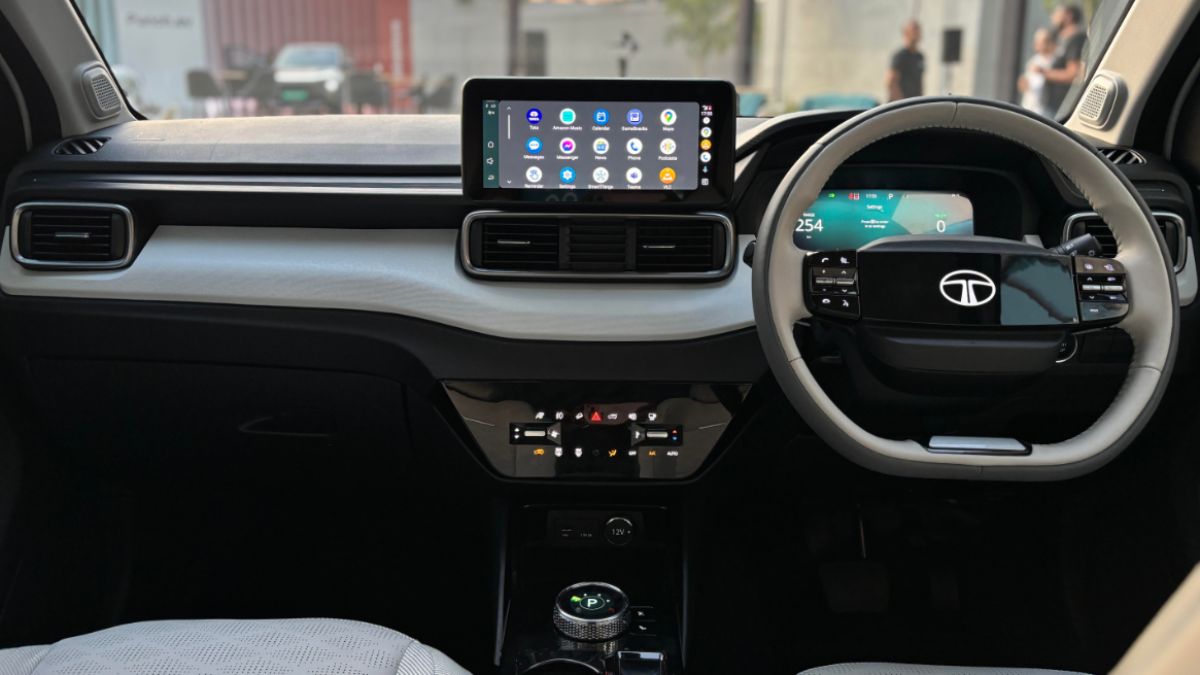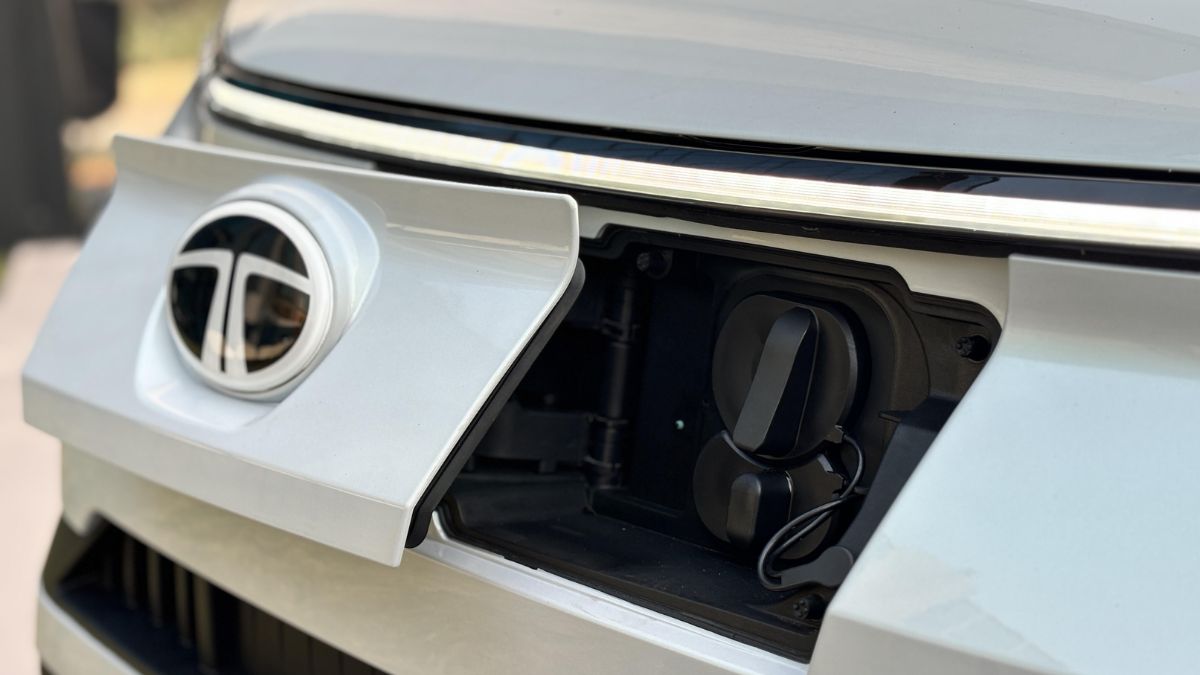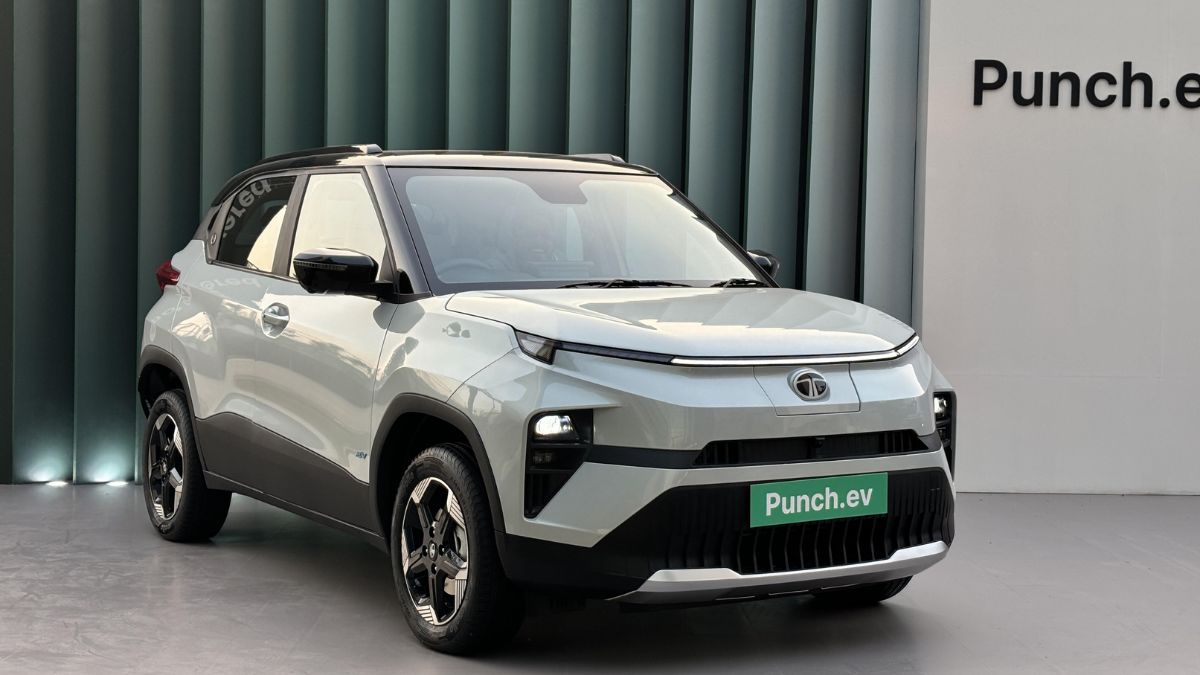- By Anirban Mitra
- Tue, 23 Jan 2024 04:48 PM (IST)
- Source:JND
Tata Punch EV Review: A solid, compact, urban electric car on a budget with a decent amount of space and features is what we expect. In this race, Tata Motors is leading the charge with a good mix of offerings. With the Punch EV, the game is only going to tilt towards the brand. Keeping market forecast at bay, are you the right customer for the Tata Punch EV? Read along to find out.
Punch is a relatively new car built on a new modular (ALFA) architecture. To my surprise, Punch Electric’s Sigma platform is not only different but will also underpin next-gen EVs from Tata Motors. This has allowed to free up some frunk (under the bonnet) space along with a sizeable 366-litre boot space. The cabin space is identical to that of the ICE-counterpart and four grown-ups fit in at ease.
The cabin and dashboard look the same in layout but are a little upmarket in finish. The two-spoke, relatively large steering wheel with digital ‘Tata’ logo also distinguishes Punch EV from the regular. Decently supportive, the seats are stitched in dark fabric. This, and features like a 7-inch touchscreen, semi-digital instrumentation, and reverse camera are present in Adventure+ and lower trims. If you’re ready to spend Rs 14.49 lakh (ex-showroom) on Empower+, the cabin greets you with wow features. There are light-coloured leatherette seats with ventilation for driver and co-driver. An armrest, wireless charging pad and mood lighting try to justify the premium. Breathe fresh air, thanks to a purifier. The trim also comes with cruise control and a surround-view camera. The sunroof and 7.2 kW AC fast charger are not standard. (₹50,000 each)

I’m glad Tata’s premium pricing ensures a healthy list of features. However, I’m apprehensive about the tech-driven conveniences. The TPMS, for instance, was blinking red even after I got it checked and remained red throughout my journey. Customers have shown displeasure with several interface-related features in Tata models, I just hope it gets better with time. HVAC controls are semi-automatic. The temperature and blower settings are changed using a physical switch, while all other controls are simply touch. A little flashy, but I enjoyed the aesthetics.
How much range is the real range? I got to try out the long-range (35 kWh) variant that comes equipped with the more powerful 90hp motor. The standard (25 kWh) variant is linked with a 60hp motor. The company’s range claim is 421 km against a single charge with the long-range battery, and I could extract 290 km in one go. I kept my foot pretty light on the pedal and largely drove in ECO mode with the highest level of regeneration. My conservative drive took me through national and state highways, rural roads, and a minor section of ghats. The company’s claim to charge the 35 kWh and 25 kWh battery packs using a 7.2 kW is around 9 hours and 7 hours respectively.
What’s sorted is the drive. Punch EV with all the battery pack and the motor is roughly 300 kilos heavier than the ICE version. The difference is visible. The electric SUV feels planted at highway speeds, and on the other hand, the suspension does a pretty decent job of soaking road imperfections. The ride quality is solid, and the passengers inside feel a great amount of damping over tall speed breakers. A healthy 190 mm ground clearance should be enough to tip-toe speed breakers to potholes. The steering has a bit of heft, and I like the feel. The steering wheel appears a size too large for the car though. There is a visible body roll around the corners due to the high seating. On the flip side, the view is commanding as the driver and the seats have good supportive side bolsters. The multi-mode regenerative braking also seemed on song. The driver may switch levels using the paddle shifters, and the intrusion in the third level is highly rewarding in stop-and-go traffic.

Safety is wholesome. Punch is a 5-star crash test-rated car and the shell is identical. Six airbags, along with ESC, LED headlights, and brake disc wiping are standard in Punch EV. All-disc brakes, electronic parking brakes and blind-spot monitoring are available with the higher trims. Beyond these, I like the compactness of the Punch EV. It’s easy to manoeuvre and filter through bustling city traffic.
There isn’t much to talk about the design. The Punch EV largely looks the same as the petrol counterpart, barring the face. The electric Punch draws inspiration from the Nexon range, featuring a connecting LED strip on top, and a redesigned headlight in the form of ice cubes. The bumper treatment is vertical lines, which try to increase the height of the car. Like it or not, this design language is becoming increasingly common in Tata’s bouquet of cars. The 16-inch alloy wheels look a little different as well, and so does the PUNCH.EV lettering on the tailgate.
EV owners will tell you what they enjoy the most —nominal running cost. If you have a small family, Punch EV should be your city run-about vehicle. I believe the Adventure trim at (roughly) ₹13.5 lakh is a decent choice. If your budget allows you to explore Empower+ trim, consider taking test rides of Nexon EV and XUV400 EC Pro. Indians love their SUVs, electric or otherwise.

